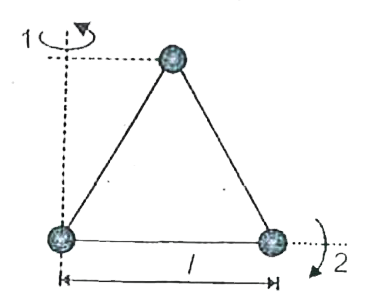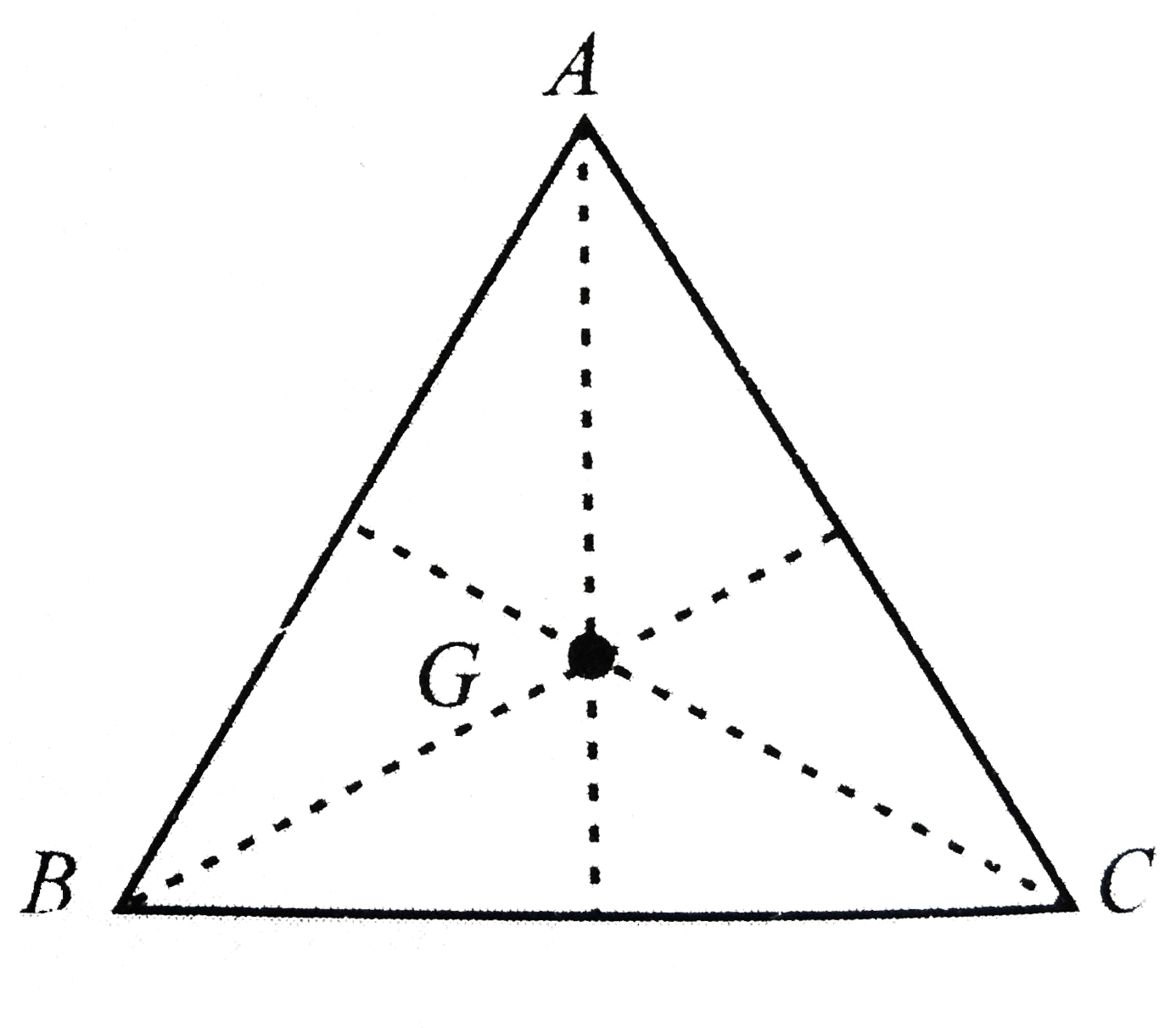Three equal masses each of mass 'm' are palced at the three corners of an equilateral of side a
If a fourth particle of equal mass is placed at the centre of triangle then net force acting on it is equal to .
3Gm2a
3Gm22a
4Gm23a
zero
The correct Answer is:B
To find the net force acting on a mass placed at the center of an equilateral triangle formed by three equal masses at its corners, we can follow these steps:
Step 1: Understand the Setup
We have three equal masses, each of mass m, placed at the corners of an equilateral triangle with side length a. A fourth mass of equal mass m is placed at the center of the triangle.
Step 2: Calculate the Distance from the Center to a Corner
In an equilateral triangle, the distance from the center to any vertex (corner) can be calculated using the formula:
d=a√3
This distance will be used to calculate the gravitational force acting on the mass at the center due to each corner mass.
Step 3: Calculate the Gravitational Force from One Corner Mass
The gravitational force F acting on the mass at the center due to one corner mass is given by Newton's law of gravitation:
F=Gmmd2=Gm2(a√3)2=Gm2⋅3a2
Where G is the gravitational constant.
Step 4: Analyze the Forces Acting on the Center Mass
Since there are three corner masses, the forces F1, F2, and F3 acting on the center mass from each corner mass will have the same magnitude F and will be directed radially outward from the center towards each corner.
Step 5: Resolve the Forces
The forces F1, F2, and F3 can be resolved into components. Due to symmetry, the horizontal components of the forces will cancel out. The vertical components will also cancel out in pairs.
Step 6: Calculate the Net Force
Since the forces are symmetrically arranged, the net force acting on the mass at the center due to the three corner masses will be zero:
Fnet=F1+F2+F3=0
Conclusion
The net force acting on the mass placed at the center of the triangle is:
Net Force=0
We have three equal masses, each of mass m, placed at the corners of an equilateral triangle with side length a. A fourth mass of equal mass m is placed at the center of the triangle.
In an equilateral triangle, the distance from the center to any vertex (corner) can be calculated using the formula:
d=a√3
This distance will be used to calculate the gravitational force acting on the mass at the center due to each corner mass.
The gravitational force F acting on the mass at the center due to one corner mass is given by Newton's law of gravitation:
F=Gmmd2=Gm2(a√3)2=Gm2⋅3a2
Where G is the gravitational constant.
Since there are three corner masses, the forces F1, F2, and F3 acting on the center mass from each corner mass will have the same magnitude F and will be directed radially outward from the center towards each corner.
The forces F1, F2, and F3 can be resolved into components. Due to symmetry, the horizontal components of the forces will cancel out. The vertical components will also cancel out in pairs.
Since the forces are symmetrically arranged, the net force acting on the mass at the center due to the three corner masses will be zero:
Fnet=F1+F2+F3=0
The net force acting on the mass placed at the center of the triangle is:
Net Force=0
Topper's Solved these Questions
Similar Questions
Three equal masses each of mass 'm' are placed at the three-corner of an equilateral triangle of side 'a'
If a fourth particle of equal mass is placed at the centre of triangle, then net force acting on it, is equal to
View SolutionThree equal masses m are placed at the three corners of an equilateral triangle of side a. The force exerted by this system on another particle of mass m placed at the mid-point of a side.
View Solution
Knowledge Check
Three masses each of mass m are palced at the vertices of an equilateral triangles ABC of side l as shown in figure. The force acting on a mass 2m placed at the centroid O of the triangle is
 AzeroB3Gm2l2C5Gm2l2D7Gm2l2
AzeroB3Gm2l2C5Gm2l2D7Gm2l2
Three particle each of mass m are placed at the corners of equilateral triangle of side l

Which of the following is/are correct ?
View SolutionThree equal masses each of mass 'm' are placed at the three-corner of an equilateral triangle of side 'a'
In the above system, if two particles are kept fixed and third particle is released, then speed of the particle when it reaches to the mid point of the side connectiong other two masses is
View SolutionThree masses, each equal to M, are placed at the three corners of a square of side a. the force of attraction on unit mass at the fourth corner will be
View SolutionThree equal masses m are placed at the three corners of an equilateral triangle of side a. find the force exerted by this system on another particle of mass m placed at (a) the mid point of a side (b) at the center of the triangle.
View SolutionThree equal masses of 1.5 kg each are fixed at the vertices of an equilateral triangle of side 1 m. What is the force acting on a particle of mass 1 kg placed at its centroid ?
View SolutionThree equal masses of 1 kg each are placed at the vertices of an equilateral triangle and other particle of mass 2kg is placed on centroid of triangle which is at a distance of √2 m from each of the vertices of the triangle .The force in newton , acting on the particle of mass 2 kg is
View SolutionThree equal masses of mkg each are fixed at the vertices of an equilateral triangle ABC.
a. What is the force acting on a mass 2m placed at the centroid G of the triangle?
b. What is the force if the mass at the vertex A is doubled? Take AG=BG=CG=1m

View Solution
